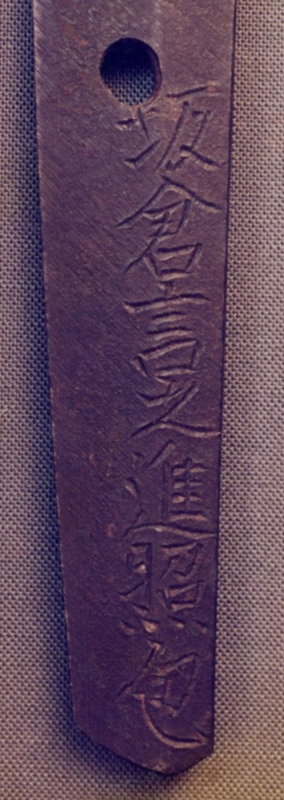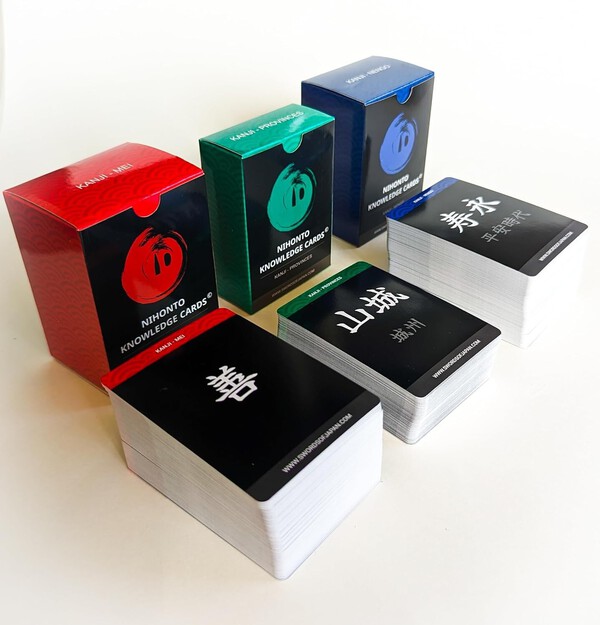-
Posts
4,935 -
Joined
-
Last visited
-
Days Won
132
Everything posted by Ray Singer
-
-
-
This appears to be a replacement juyo certificate, after the original was lost.
-
Excellent osuriage mumei wakizashi in suguha with a deep sori. From this week's shinsa the judgement was Hizen Yoshisada. In beautiful bukezukuri koshirae, now available from the new consignments I returned with. Further details and dimensions shortly. $2,500+ shipping & PP
-
- 2
-

-
Signed Kunihiro
-

Trying to get info on an estate sale find (gunto?)
Ray Singer replied to mackiejamie's topic in Nihonto
I am sorry for the bad news. Please see below. http://www.jssus.org...japanese_swords.html -

o-suriage Nakago stamp on Kamakura era katana
Ray Singer replied to Lewis B's topic in General Nihonto Related Discussion
This specific example looks to read Hidezane. -

please help with translation on tang.
Ray Singer replied to Andygw's topic in Translation Assistance
https://www.Japanese...dindex.com/emura.htm -
Sagami no kuni junin Hiromitsu The inscribed date is Joji 2
-
Settsū Ikutama Tadashige
-
I replied to the owner of this one a month or so back. I was not aware it had been posted again, perhaps to a different group. Please drop in a link here.
-
伊豫掾源宗次 - Iyojō Minamoto Munetsugu Looks like the nakago shape used by the shodai.
-
因幡國住藤原兼先 - Inaba (no) kuni ju Fujiwara Kanesaki
-

Translation of Inscription on tang of Wakazashi?
Ray Singer replied to JoeRogue's topic in Translation Assistance
同田貫兵部 - Dotanuki Hyōbu https://nihontoclub.com/smiths/HYO2 -

Newest Samurai/Military Sword Purchase
Ray Singer replied to Myles's topic in Military Swords of Japan
I wouid consider that this might not be a kamon, and is instead a surname. Naka___ (reading of the second kanji is unclear). -

Newest Samurai/Military Sword Purchase
Ray Singer replied to Myles's topic in Military Swords of Japan
Myles, the reading should be 藤原綱行 - Fujiwara Tsunayuki. This is a Bungo Takada (Fujiwara Takada) blade, and is a suriage (shortened) blade from Shinto times (early part of the Edo period). Unsure what is mean by this: "an element of the translation saying Kanji" -
This mei is for the smith Tsunemitsu. Record below from Markus Sesko. TSUNEMITSU (常光), Keian (慶安, 1648-1652), Musashi – “Tsushima no Jō Tachibana Tsunemitsu” (対馬掾橘常光), “Bushū-jū Tsushima no Kami Tachibana Tsunemitsu” (武州住対馬守常光), “Tsushima no Kami Tachibana Tsunemitsu” (対馬守橘常光), “Tsushima no Kami Tachibana Nyūdō Tsunemitsu” (対馬守橘入道常光), “Chikyū Tsunemitsu Nyūdō” (知休常光入道), “Heki Ippō” (日置一法), “Heki Tsushima no Kami Tsunemitsu Nyūdō” (日置対馬守常光入道), “Tsushima Nyūdō Tsunemitsu” (対馬入道常光), real name Heki Ichinojō (日置市之丞), he changed his first name later to Saburōzaemon (三郎左衛門) and Hachizaemon (八左衛門), there exist also blades which are signed with the characters (恒光) for Tsunemitsu, he was the younger brother of Heki Mitsuhira (光平) and he used the gō Chikyū (知休) and Ippō (一法), there is also the theory that the latter was not the gō of Tsunemitsu – see also “IPPŌ (一法), Genroku (元禄, 1688-1704), Musashi” – however, Tsunemitsu came originally from Ōmi´s Gamō district (蒲生) and moved via a stopover in Yamashiro province to Edo where he settled in the Yotsuya district (四谷), he and other Edo-based Ishidō smiths are referred to as Edo-Ishidō, his works remind of kotō-Ichimonji masterpieces and show an ōbusa-chōji-midare but there appears masame at the Edo-Ishidō smiths and the utsuri is “too regular” for a kotō work, there exists a blade with the date signature of the 13th year of Genroku (元禄, 1700) and the information “made at the age of 73,” that means he was born in the third year of Kan´ei (寛永, 1626), we know date signatures from the first year of Keian (慶安, 1648-1652) to the 16th year of Genroku (1703), it is assumed that he died shortly after Genroku 16, because of his quite long active period the theory was forwarded that there were two generations Tsunemitsu, he signed the character for “Tsu” (対) in the old version (對), ryō-wazamono, jō-saku
-
Please more clearly show the nakago (even if unsigned). You occasionally see over-the-top Soshu style works from shinshinto smiths. Late Edo interpretation of hitatsura is what comes to mind.
-

Could someone help with this cut down nihonto mei?
Ray Singer replied to windsshi's topic in Translation Assistance
Best guess is 島田住助定 - Shimada ju Sukesada -
No it would not be the case of a smith or horimono-shi intentionally running past the ko-shinogi. There's no reason to do that, and it's not something that would happen by accident. The kissaki has been lowered to a degree where the bo-hi runs into the kissaki itself.
-
Yes, the kissaki has clearly been reduced. This is not how the kissaki was originally structured, however it is also not a very significant problem in terms of the importance of a sword. You can see a similar feature in the tokuju Enju Kunitoki from the Compton collection.
-
Hi everyone, sharing another post for the kanji flashcards. I have received an additional order in, and the cards are in three study categories: Mei (names) - the more commonly seen kanji used in swordsmith's mei, including examples of mei containing that the featured kanji - 152 cards Kuni (provinces) - the reading of the Japanese province names, with information about the provinces and some reference information on related schools and representative smiths - 90 cards Nengo (time periods) - the kanji for time periods from the late Heian period to the present, with reference information on each time period - 144 cards My hope with these is that everyone who uses the cards can have a better understanding of the fundamentals of reading Japanese sword inscriptions and kanteisho, and this will unlock access to Japanese language references for the study of Japanese swords. These cards are now available for $25 each plus shipping. Please email me at raymondsinger@gmail.com if you would like to order a set. And if you learned about the cards through this post and place an order, I will donate 5% of each sale back to the NMB. Best regards, Ray
- 1 reply
-
- 1
-






































